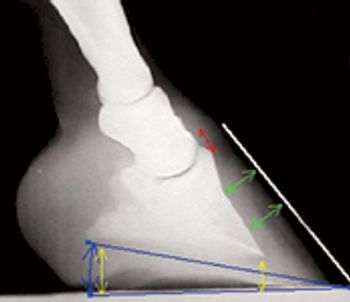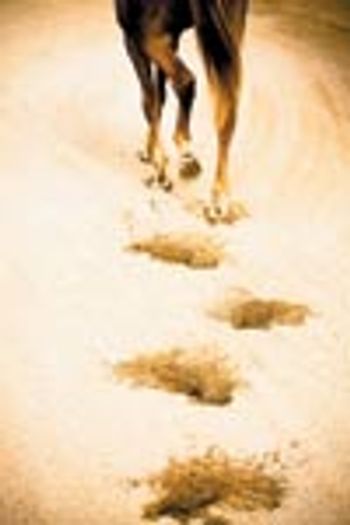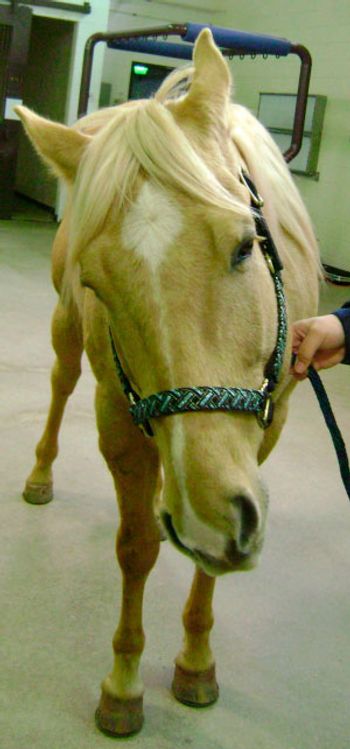
The three most common gastrointestinal problems that are seen in the foal include colic, gastric ulcer disease and diarrhea. Though these are also common in the adult the foal has different specific etiologies and treatments.

The three most common gastrointestinal problems that are seen in the foal include colic, gastric ulcer disease and diarrhea. Though these are also common in the adult the foal has different specific etiologies and treatments.

Older horses can present with the same problems as the younger horse but there are a few specific problems that occur with age or worsen with age.

Recurrent airway obstruction (RAO, or heaves) and inflammatory airway disease (IAD) are highly prevalent in stabled horses, and require treatment with corticosteroids and bronchodilators in addition to environmental modification.

Aging is not a disease. It occurs in all organisms if they live long enough! Some definitions that are helpful when speaking about aging include life span, life expectancy, chronologic age, biologic age and demographic age.

Septic arthritis and osteomyelitis are recognized sequela to bacteremia/sepsis in the neonatal foal.

The neurologic examination of the foal has many similarities as that of the adult horse but there are some important differences.

Pituitary Pars Intermedia Dysfunction, PPID, also known as equine pituitary adenoma, equine Cushings, and equine pituitary hyperplasia is the most common endocrinologic problem in horses.

Sepsis or septicemia in the equine neonate is a common cause of mortality in the foal.

The majority of neonatal foals are born healthy and vibrant individuals; however, when a foal becomes ill, some disease processes can be severe and life threatening.

Administration of fluids to horses with various disease processes is one of the foundations of treatment for equine practitioners.

Often times a thorough physical examination complemented with a blood count or chemistry profile provides enough information to establish a tentative diagnosis in ill horses and consequently guide appropriate therapy.

Although the foundations of medical education remain largely unchanged over time, active and continuous research provides new and potentially useful information on various avenues of clinical practice such as new medications that become available, new information on the nature of various disease processes, and new diagnostics that may help the clinician.

Knoxville, Tenn. -- The Equine Hospital at the University of Tennessee (UT) Veterinary Medical Center was placed under a 7-day quarantine Sept. 16 by the Tennessee State Veterinarian following a confirmed case of equine herpesvirus (EHV-1).

One practitioner's 13-step protocol to help horses suffering from this painful condition – plus photos that illustrate different grades of laminitic event.

Conditioning principles coalesce between the two disparate forms of sport, to mutual benefit.

The summit focused on exercise-induced pulmonary hemorrhage and the use of furosemide in race horses.

Caring for those affected by the disease that caused champion Uncle Mo to be scratched from the Derby.

Sonoma County, Calif. -- Three cases of the same neurotropathogenic strain of equine herpesvirus (EHV-1) that sickened more than two dozen horses during an outbreak in May have been confirmed on a single ranch in Sonoma County, but animal health officials say the two outbreaks are unrelated.

Clarksville, Ark. -- Eighty horses on a ranch in the Clarksville area are under quarantine after a ?substantial and alarming? outbreak of equine infectious anemia (EIA) was discovered there.

At CVC Kansas City yesterday, Dr. Amanda House from the Univeristy of Florida's College of Veterinary Medicine offered attendees an overview of the current core vaccination guidelines as recommended by the American Association of Equine Practitioners.

Incorrect answer for Equine Image Quiz: Neurologic deficits and vestibular dysfunction in a palamino

What's causing this horse's head tilt and facial nerve paralysis?

Correct answer for Equine Image Quiz: Neurologic deficits and vestibular dysfunction in a palamino

Bacterial septicemia is the leading cause of morbidity and mortality in equine neonates. Survival rates reported over the last 5 years in retrospective studies of septicemic foals are highly variable, ranging between 40 and 70%, and comparisons among studies are difficult because of differences in case definition.

Mechanical injuries to peripheral nerves occur because of compression, entrapment, transection, laceration, ischemia, crushing, stretching, or chemical or burn damage. Neurapractic lesions are characterized by a failure of conduction of the action potential across the injured axonal segment.